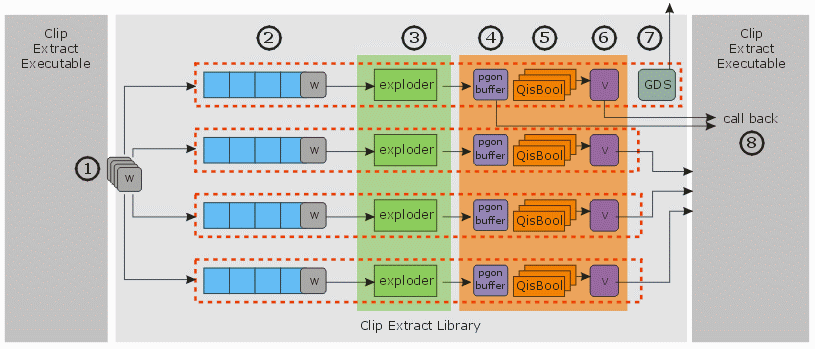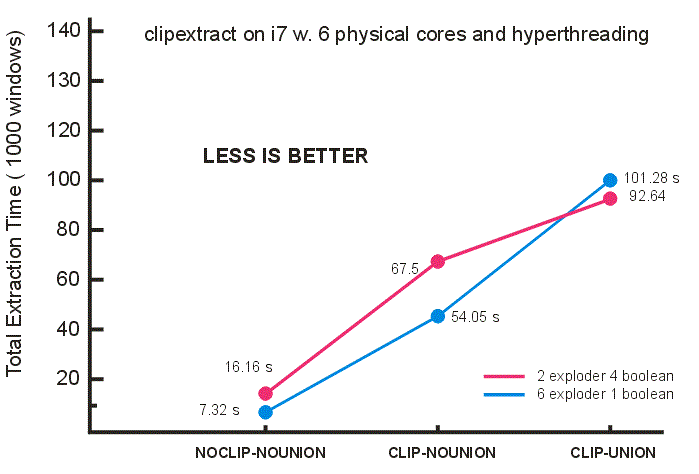Benchmarks
Benchmarking is difficult because one really must produce a specific output in a specific way that matches our client's needs. At the same time we are trying to run enough data points to understand how the programs work for different sized GDSII files, different hardware and so on.
Benchmark 1 - GDSII In, Windows, GDSII Output
Input File - P8.gds (9 GB) Layers 40,43,46,47 and 49 processed simultaneously.
Operating System - Windows 7 Pro SP1 64 bit
Hardware -- i7-3930K CPU 6 cores HyperThreading. 3.2 GHz, 32 GB RAM - SSD system disk 500 MB/sec RW
Benchmark Flow
The benchmark is performed using clipextract - an application (and a library) that utilizes QISLib_MT for extracting data from a supplied window and the QISBool for clipping and unionizing polygons passed to it.

Step-by-Step
1. The Clip Extract Executable reads a list of randomly generated 50 x 50 um windows from a file
2. Windows are queued up and sent to one of the threaded exploders.
3. The exploder thread traverses the hierarchy extracting any boundaries or paths that cross the window.
4. Geometries are accumulated in a polygon buffer. Paths are converted to polygons.
5. QISBool reads from the polygon buffer and optionally clips the polygons where they cross the window edge. It can also be instructed to completely unionize all touching and overlapping polygons than remain after clipping.
6. Results are stored in another buffer labeled V in the diagram. The input and output buffers share identical formats. QISBool itself is multithreaded.
7. If the Clip Extract application has been instructed to output GDSII, then the Clip Extract Library will format and write the contents of the V buffer to disk.
8. If the user prefers to read the clipped vectors directly from buffer V, the callback function makes the pointer to the buffer available.
This diagram does not show the opening of the GDSII file and building of the quad tree and loading of the entity data into RAM.
Output Clipping and Unionization Options
The number of windows that can be processed per second are greatly dependent on our choice of clipping and unionization. There are three options:


